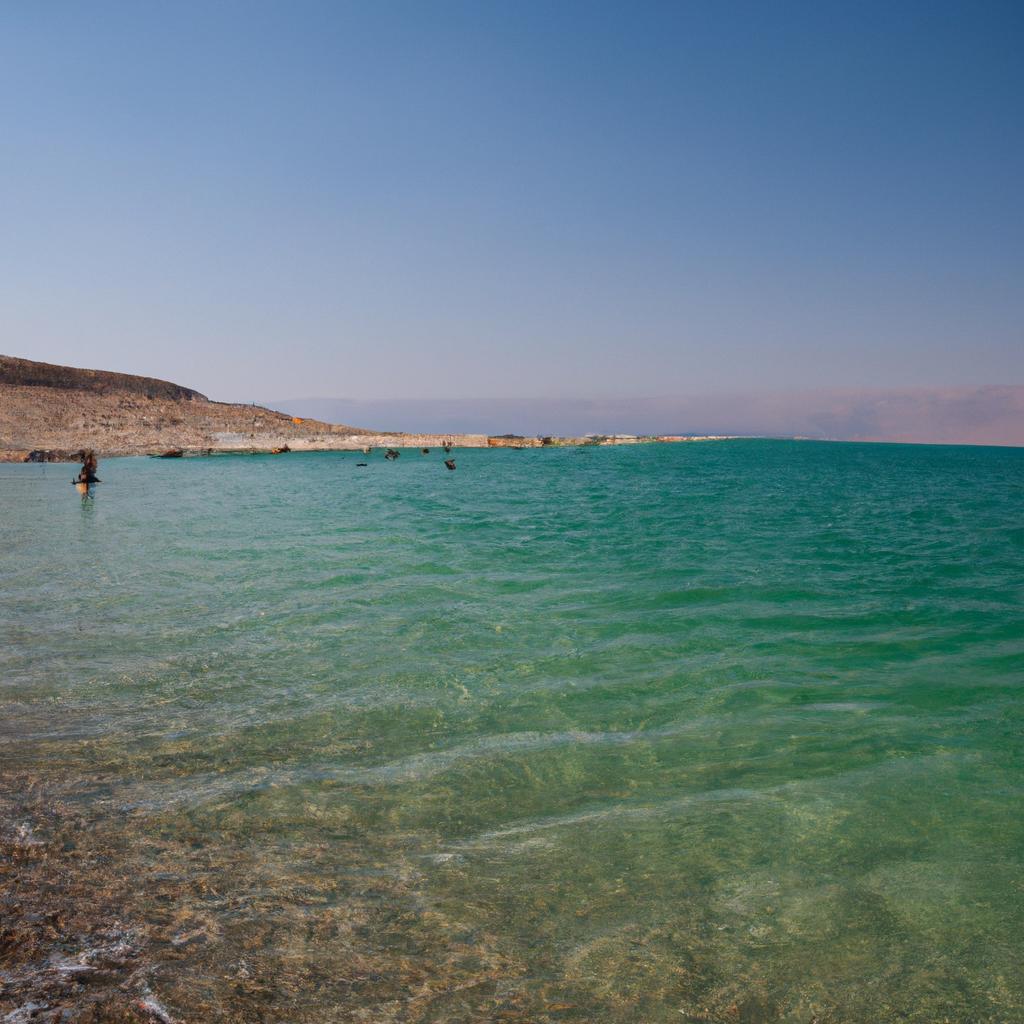The Dead Sea, nestled between Jordan and Israel, is renowned for its therapeutic properties and high salt concentration. But just how salty is the Dead Sea? Join us as we delve into the captivating world of this unique body of water and unveil the answer to this burning question.
An Unparalleled Wonder
The Dead Sea has a rich and ancient history dating back to biblical times. This saltwater lake, bordered by Jordan to the east and Israel and the West Bank to the west, sits at the lowest point on Earth, with its shores more than 400 meters below sea level. What sets the Dead Sea apart is its exceptionally high salt concentration, making it a harsh environment for most living organisms.
Understanding the salt content of the Dead Sea is key to appreciating its unique properties. Not only does it shape the lake’s ecology, but it also contributes to its therapeutic benefits. Let’s explore the factors behind the high salt concentration, the methods used to measure it, and the benefits it holds.
What Makes the Dead Sea So Salty?
The Dead Sea owes its high salt concentration to several factors. As a landlocked lake without an outlet, it accumulates dissolved minerals, including salt, brought in by flowing water. Over time, with no escape route, these minerals become concentrated, resulting in the Dead Sea’s briny essence.
Coupled with the arid climate of the region, where rainfall is scarce and water replenishment is slow, the salt concentration becomes even more pronounced. Furthermore, the scorching heat and evaporation rates in this hot, dry area cause water to disappear quickly, leading to an increase in salt concentration.
Comparing Salt Concentrations
To truly comprehend the extraordinary salinity of the Dead Sea, let’s compare it with other bodies of water:
- The average ocean has a salt concentration of about 3.5%.
- The Dead Sea boasts a salt concentration of approximately 33%.
- The Great Salt Lake in Utah measures around 5%.
- The salt concentration of the Caspian Sea ranges from 0.05% to 1.2%.
Evidently, the Dead Sea stands out as an unparalleled wonder, surpassing most other bodies of water in terms of saltiness.
Measuring the Salt Content
Measuring the salt content of the Dead Sea is no simple task. Various methods and units of measurement are employed. Salinity is typically expressed in parts per thousand (ppt), representing grams of salt per liter of water. For instance, seawater has a salinity of around 35 ppt, while the Dead Sea boasts an astonishing 300 ppt, surpassing all other bodies of water on Earth.
Density, another unit of measurement, is also utilized due to saltwater’s greater density compared to freshwater. This higher density contributes to the Dead Sea’s unique characteristics.
Several methods are employed to determine the salt content of the Dead Sea. The gravimetric method involves weighing a water sample and evaporating it to measure the salt content. The conductivity method measures the water’s electrical conductivity, while the refractive index method gauges the bending of light passing through the water.
Regardless of the method employed, the Dead Sea’s salt content remains consistently high, solidifying its status as an extraordinary body of water.
The Benefits of the Dead Sea’s Salinity
The Dead Sea’s high salt concentration offers remarkable benefits for both health and beauty. Let’s explore some of the notable advantages it provides:
Health Benefits of Dead Sea Salt
For centuries, Dead Sea salt has been utilized for its therapeutic properties. With its high salt concentration and mineral composition, this salt is a versatile treatment for various health conditions. It has proven effective in:
- Alleviating skin conditions such as psoriasis, eczema, and inflammation, providing relief from itching, redness, and dryness while moisturizing the skin.
- Easing muscle and joint pain, arthritis, and fibromyalgia, offering relaxation, reducing tension, and promoting healing.
- Improving respiratory function, aiding individuals with asthma, allergies, or respiratory conditions by clearing airways and enhancing breathing.
Use of Dead Sea Salt in Cosmetics and Skincare
Dead Sea salt has also found its place in the cosmetic and skincare industry, offering a range of beauty benefits:
- Exfoliation: The salt acts as a natural exfoliant, gently removing dead skin cells and promoting cell renewal, resulting in smoother, brighter, and more youthful-looking skin.
- Hydration: The minerals present in Dead Sea salt work to hydrate the skin, leaving it soft, supple, and alleviating dryness.
- Detoxification: Dead Sea salt aids in drawing out impurities and toxins from the skin, leaving it cleansed and refreshed.
Embracing Dead Sea salt in your routine can help improve your skin’s health, reduce pain and inflammation, and promote relaxation and overall well-being.
The Impact of Human Activity
Over the years, human activity has significantly impacted the Dead Sea’s unique ecosystem. Major diversion projects surrounding the area have diverted water from the Jordan River, the main source feeding the Dead Sea, for agricultural and industrial purposes. Consequently, these diversions have caused a drop in water levels and a subsequent increase in salt concentration.
Effects of Diversion Projects
The diversion of water from the Jordan River has had a profound impact on the Dead Sea. As water levels decrease, the lake’s surface area shrinks, intensifying the salt concentration. This change disrupts the lake’s delicate ecosystem, making survival challenging for many organisms. Additionally, the receding water levels have led to the formation of sinkholes, posing risk to human life and the region’s infrastructure.
Preserving the Salt Content
To counteract the negative effects of diversion projects, various measures have been undertaken to preserve the Dead Sea’s salt content. Notably, the Red Sea-Dead Sea Water Conveyance Project aims to transfer water from the Red Sea to the Dead Sea, replenishing water levels and reducing salt concentration. Although still in the planning stage, this project holds immense potential in preserving the Dead Sea’s unique characteristics.
Additionally, efforts have been made to reduce water consumption in the surrounding region, stemming from the Jordan River. By limiting water extraction, water levels in the Dead Sea can stabilize, leading to a decrease in salt concentration. These endeavors play a crucial role in safeguarding the Dead Sea’s distinctive ecosystem for future generations.
In Conclusion
The Dead Sea stands as an exceptional body of water, boasting a fascinating history and extraordinary properties. Its high salt concentration distinguishes it from all other bodies of water, making it a truly remarkable marvel. From its use in health treatments to beauty products, the Dead Sea offers something for everyone.
As TooLacks, we value the preservation of the Dead Sea’s natural characteristics for future generations. The threat posed by diversion projects necessitates action to safeguard this incredible resource. Let us unite to ensure the Dead Sea remains a source of wonder, healing, and boundless admiration.


